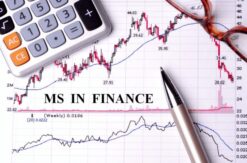
The first step that all the students and professionals take is to check the global MBA rankings when they decide to go for a global MBA program. Most of the time, the decision to choose a school is heavily influenced by the global MBA rankings. In this blog post, we will explain how relevant these global MBA rankings are, the process & design of data collection, and the criteria used for the global MBA rankings. This will give a clear picture, a better understanding of the ranking process, and its significance. There are a couple of organizations that provide global MBA rankings such as financial times, QS global, Economist, etc. We will focus on the methodology followed by financial times, as others also have a similar methodology for the global MBA rankings. All the schools participating in the global MBA rankings should be accredited by Equis or the AACSB.
Let’s start with the process of design and data collection:
The Financial Times surveys alumni three years after completing their MBA. For schools to enter the ranking calculations, the Financial Times requires that a minimum of 20 % of alumni reply to the survey, with at least 20 fully completed surveys per school. The global MBA rankings have 20 different criteria’s and each criterion has been assigned some weight. Out of these 20 criteria, alumni responses hold a weightage of 61% through 8 criteria in total. Another 29%, which constitutes 11 criteria, is calculated from the school data. The remaining 10% is the research rank, which is publically available. The data is audited by a Big 4 firm.
The data collected from alumni are based on 3-year data. For example, in 2020 global MBA rankings, the data is collected from 2017 graduates. Responses from the 2020 survey carry 50% of total weight and those from 2019 and 2018, 25% each. If only two years of data are available, the weighting is split 60:40 if data are from 2020 and 2019, or 70:30 if they are from 2020 and 2018. For salary figures, the weighting is 50:50 for two years’ data.
So, this is an overview of the process. As the data is collected from the alumni, school, and public domain, so that’s the reason the global MBA rankings by financial times are most authentic and accurate. The next step is to understand all the 20 criteria which are used for global MBA rankings.
List of criteria used for global MBA rankings:
For salary data, salary today is the average alumnus salary three years after graduation, USD purchasing power parity (PPP) equivalent. Along with the criteria, the weight is also mentioned.
- Weighted salary (20): This is calculated by the average alumnus salary three years after graduation (USD PPP equivalent), with normalization for variations between sectors and industries.
- Salary increase (20): This is calculated by the average difference in alumni salary from before the MBA to now. Half of this figure is calculated according to the absolute salary increase, and a half according to the percentage increase relative to pre-MBA salary. This is a salary percentage increase. Now, as you can clearly see that the salary is reflected over 3 years, so this only shows the trend and not an actual figure. Secondly, the figures are normalized according to the sectors and industries, so you will never understand whether it would be a good indicator of your background or not.
- Value for money (3): This is calculated using salary today, course length, tuition, and other costs, including lost income during the MBA.
- Career progress (3): This is calculated according to changes in the level of seniority and the size of company alumni are working in now, compared with before their MBA.
- Aims achieved (3): The extent to which alumni fulfilled their stated goals or reasons for doing an MBA.
- Careers service (3): This is very important and schools do take this weight very seriously. The effectiveness of the school careers service in terms of career counseling, personal development, networking events, internship search, and recruitment, as rated by their alumni.
- Employed at three months (2): The percentage of the most recent graduating class who had found employment or accepted a job offer within three months of completing their studies. The figure in brackets is the percentage of the class for which the school was able to provide employment data, and is used to calculate the school’s final score in this category.
- Alumni recommend (3): This is calculated according to selection by alumni of three schools from which they would recruit MBA graduates.
- Female faculty (2): The percentage of female faculty for the program.
- Female students (2): The percentage of female students in the full-time MBA program.
- Women on board (1): The percentage of female members on the school’s advisory board.
- International faculty (4): This is calculated according to the diversity of faculty by citizenship and the percentage whose citizenship differs from their country of employment.
- International students (4): This is calculated according to the diversity of current MBA students by citizenship and the percentage whose citizenship differs from the country in which they study.
- International board (2): This is based on the percentage of the board whose citizenship differs from the country in which the school is based.
- International mobility (6): This is based on alumni citizenship and the countries where they worked before their MBA, on graduation, and three years after graduation.
- International course experience (3): This is calculated according to whether the most recent graduating MBA class completed exchanges, credited short classes, study tours, and internships in countries other than where the school is based.
- Languages (1): The number of extra languages required on completion of the MBA.
- Faculty with doctorates (5): This is based on the percentage of full-time faculty with a doctoral degree.
- FT research rank (10): This is calculated according to the number of articles published by current full-time faculty members in 50 selected academic and practitioner journals during the assessment period. The FT50 rank combines the absolute number of publications with the number weighted relative to the faculty’s size.
- Corporate Social Responsibility (3): This is the proportion of teaching hours from core courses dedicated to Corporate Social Responsibility, ethics, social and environmental issues.
Now, you can clearly understand that the biggest motivation for students which is salary, only consists of 40% in the overall global MBA rankings. There might be a case where you see a school higher in ranking but lower in weighted salary and vice versa. So, before you make a decision, do detailed research on the school and try to align it with your MBA objective. The idea is to find the best fit and not just go by rankings.
Subscribe for the latest videos on a variety of careers, study abroad, interview, resume, etc.
https://www.youtube.com/VikingsCareerStrategists
In case you need any assistance in the application process for the MBA programs across the globe, feel free to connect with our experts. Book your free consultation now!



